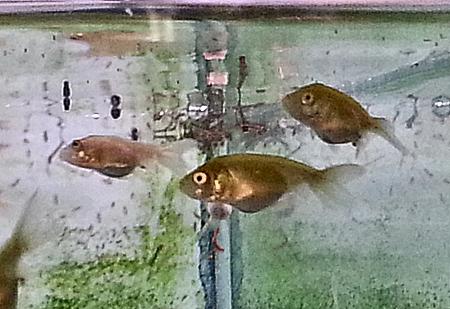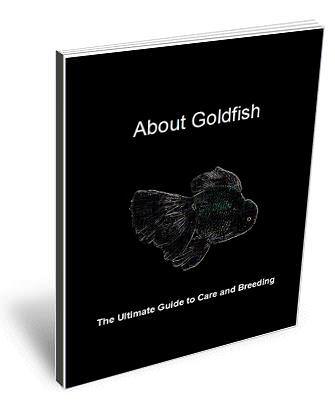| Back to Back Issues Page |
 |
|
The Goldfish Gazette, Issue #036 -- Growing Live Food December 24, 2016 |
Goldfish Care Tips and GuidelinesA Free Monthly Resource For Goldfish Enthusiasts In This Issue
For the enthusiast to successfully breed Goldfish and raise the fry into stunning adults, feeding live food for the first few weeks is critical. Some Goldfish varieties such as the Ranchu are only fed live food by their Japanese owners for several years until they reach their full development. Growing Live Food
The age old argument whether it is environment or heredity (genes) that has the most affect on how an animal turns out as an adult can in part be answered by Goldfish. As J Smartt in his book Goldfish Breeding and Genetics explains, it has to be a combination of both. A Goldfish that is produced from prize winning parents won't develop into a prize winning fish if it is poorly fed and raised in poor water conditions. Ranchu and lionheads are a classic example of this. If their water conditions are poor, and they are not fed large amounts of live food for several years, their wens (head growth) won't develop anywhere near the size they should. Which brings me to the topic of this month's e-Zine, growing live food. Live Food For the First 3 WeeksFor the first few weeks of a Goldfish's life, feeding live food is easy; feed them newly hatched brine shrimp. Constructing a simple hatchery from discarded plastic fruit juice containers is cheap and easy. About three weeks after hatching, brine shrimp are a little small for growing Goldfish and they should be moved on to daphnia and mosquito wrigglers. Daphnia and Mosquito Wrigglers Follow Brine ShrimpIf you have the room, an 80-100 gallon container will provide enough daphnia and mosquito wrigglers for hundreds of fry. If the fry are fed enough, they appear to grow before your eyes. Daphnia are easy to grow, and mosquitoes love to lay their eggs in daphnia containers. Mosquito wrigglers are arguably better food for the fry than daphnia. From about four weeks fry can be fed a high quality prepared food along with live. I feed small pieces of Repashy Soilent Green gel food which the fry pull to pieces. At 6 weeks the fry should be nearing 3/4" (19mm) in body length and resemble miniatures of their parents. They have passed the critical first month, and will have had the best possible start. The image above is of my latest Water Bubble Eye spawn 3 weeks after hatching. They have been fed using these techniques and will easily reach 3/4" (19mm) by 6 weeks. From this age on, white worms, another easy to grow live food can be fed when other seasonal live foods are unavailable. Once fry are past the juvenile stage, keep feeding live food as often as possible because it brings huge benefits to the final development of the adult fish. To learn more about growing live food click here... Advanced e-Book Review I need your help!
I need your help!
Some visitors to the About Goldfish website have mentioned they often don't have time to surf through the many pages to find information, or they don't find what they are looking for. To help these visitors, I've written an e-Book based on the website with information grouped under appropriate sections and with clickable links in the TOC (table of contents). It's called About Goldfish - The Ultimate Guide to Care and Breeding. As confirmed Goldfish enthusiasts I would value your opinion after reviewing an advanced copy of the e-Book and giving me feedback, good or bad. If you would be interested, please reply with a yes to this email. As a thank you, you will receive a free copy of the final version when it is published. Have a Very Merry Christmas and Prosperous New YearComments? Ideas? Feedback? I'd love to hear from you. Just reply to this e-zine and tell me what you think, or what topics you want covered. Next Month's Topic Spawning Problemswww.facebook.com/aboutgoldfish |
| Back to Back Issues Page |